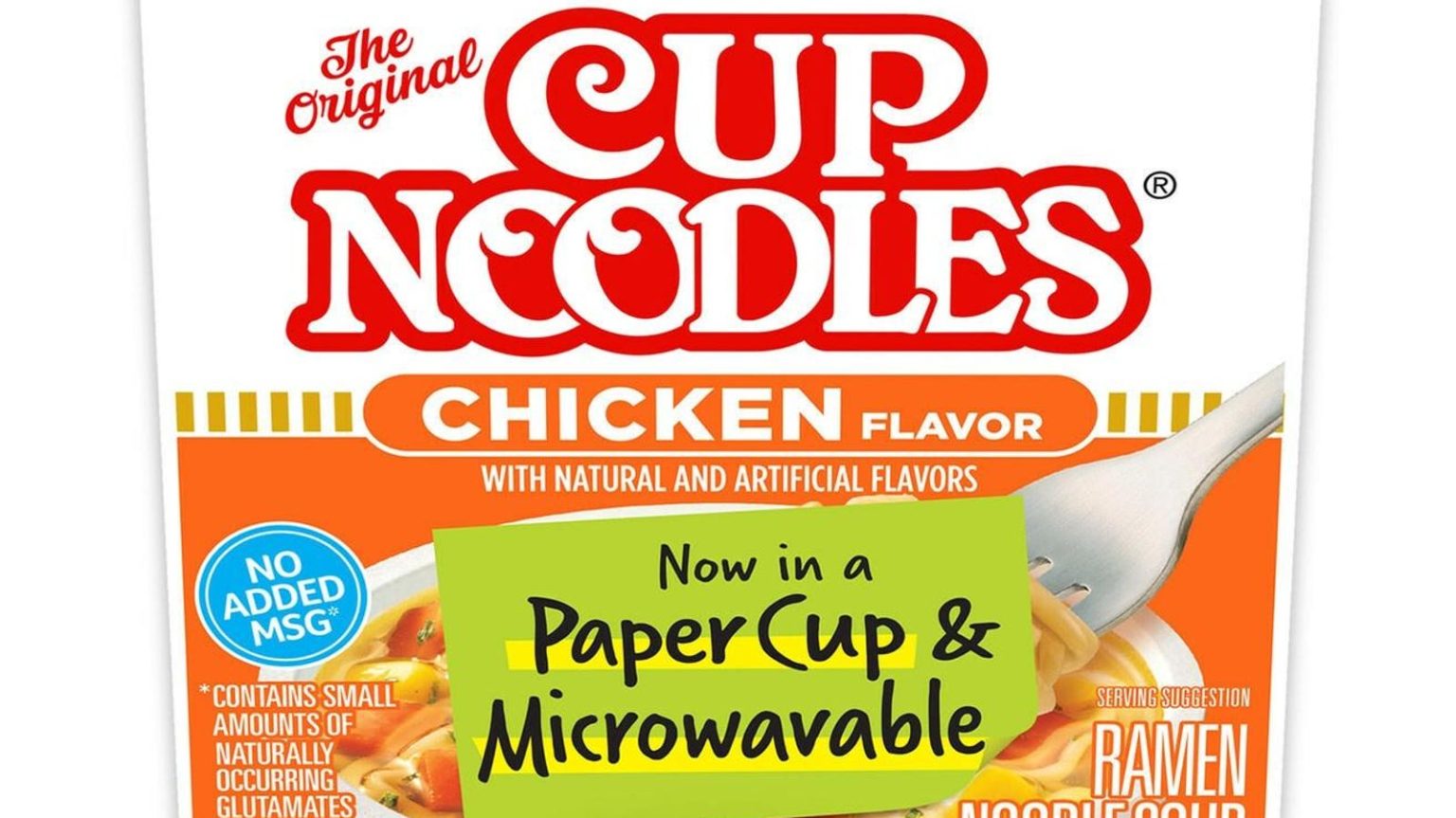Topline
The makers of Cup Noodles recently announced a switch to microwavable packaging, as components of the current Styrofoam packaging have been found to be bad for the environment and possibly carcinogenic—confusing some consumers who thought the ramen noodle product was already microwave-safe.
Key Facts
Cup Noodles, an instant ramen brand, will get new packaging in early 2024: Paper cups will replace the current Styrofoam cups and their plastic wrap will be eliminated, Nissan Foods, the makers of Cup Noodles, announced in October.
The new cups will be made from 40% recycled fiber and the cups’ sleeves will be made from 100% recycled paper, a move the company says will help decrease its CO2 emissions by 30% by 2030 and reach “carbon neutrality” by 2050.
But the new design serves another purpose by making Cup Noodles microwavable, something consumers have already been doing for years—even against the packaging’s warning.
After the announcement, consumers took to X, formerly known as Twitter, to share they didn’t know Cup Noodles weren’t supposed to be microwaved, including one X user who said they’ve been microwaving Cup Noodles for “20 years.”
Others said they were aware the product—which is intended to be made with boiling water—wasn’t microwave-safe, but still did it anyway.
Styrofoam is made from expanded polystyrene, a lightweight plastic foam with many uses, like wall insulation, shipping package protection and food packaging, but a World Health Organization agency has labeled components of the plastic as “possibly carcinogenic to humans.”
Crucial Quote
“This updated packaging and the new paper cup marks an important milestone for Cup Noodles and a key step in our environmental commitment,” Michael Price, president and CEO of Nissin Foods said in a statement. The new microwaveable packaging also cuts preparation time to just over two minutes, the company said.
Big Number
80,000. That’s how many tons of Styrofoam containers the U.S. produced in 2018, but less than 5,000 tons were recycled, according to the Environmental Protection Agency. That same year, 140,000 tons of polystyrene bags, wraps and sacks, and 330,000 tons of other packaging were generated, but 20,000 tons were recycled.
Key Background
Expanded polystyrene is made from the chemical styrene, which is a colorless, flammable liquid WHO labeled as possibly carcinogenic. Other scientific bodies have recognized styrene’s potentially cancer causing effects, like the National Toxicology Program and the National Academy of Sciences, which said there’s limited evidence that styrene can cause leukemia, lymphoma and pancreatic cancer. Breathing in high levels of styrene can cause nervous system damage like balance problems, tiredness, changes in color vision, slowed reaction time and concentration issues, the Agency for Toxic Substances and Disease Registry reports. Because of its lightweight material, polystyrene foam containers and cups are cheaper to produce than other to-go container materials. However, microwaving Styrofoam and other expanded polystyrene containers “accelerates [chemicals’] movement out of the plastic and into the food,” which are then ingested, Rolf Halden, professor and director of the Biodesign Center for Environmental Health Engineering at Arizona State University, told Insider. Heating up non-microwavable containers in the microwave poses other dangers, too. Instant noodle burns accounted for around 30% of all childhood burns between 2010 and 2020 at the University of Chicago’s Burn and Wound Center due to inadvertent spills when taking the containers out of the microwave.
Tangent
Several states have banned or proposed legislation to ban expanded polystyrene food containers due to environmental risks, like New York, Washington and Maryland. These products are difficult to recycle and aren’t easily biodegradable, so they remain in the environment for a long time, the New York Department of Environmental Conservation reports. Because expanded polystyrene containers can easily break into tiny pieces, it’s one of the leading threats to marine life, according to the Global Seafood Alliance. Expanded polystyrene makes up 23% of plastics on beaches and 17.2% in marine surface waters, according to a 2023 study published in Environmental Advances. However, it’s more prominent in Asia, making up 40.4% of beach plastics and 31% of the plastics in marine surface waters.
Why microwaving styrofoam is a bad idea (Insider)
Read the full article here





